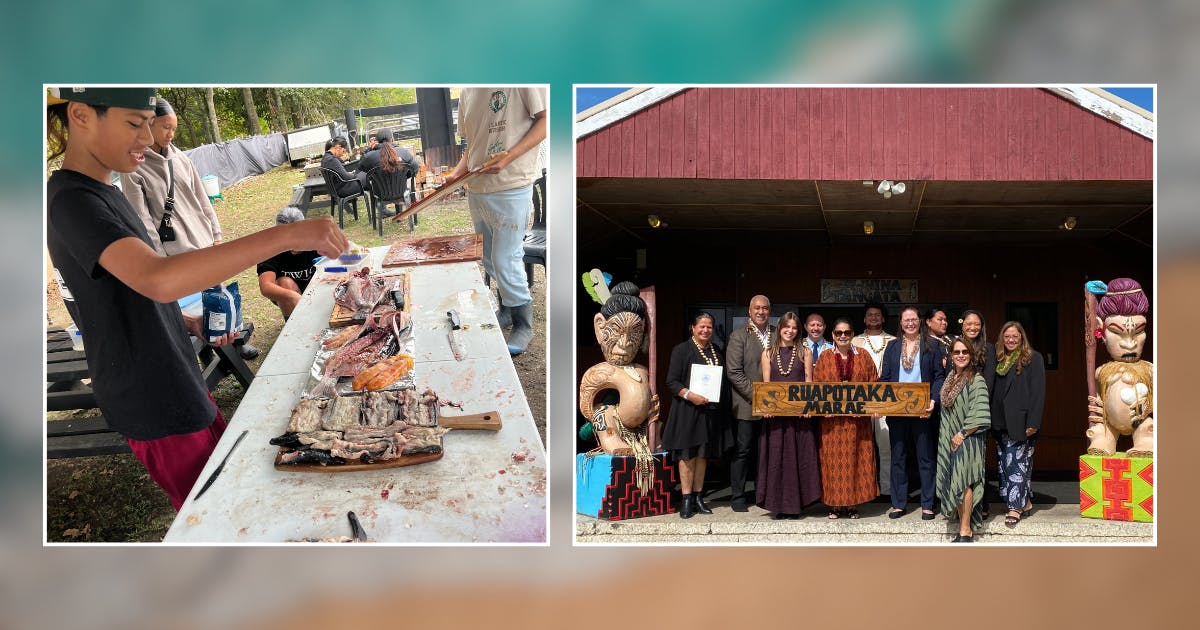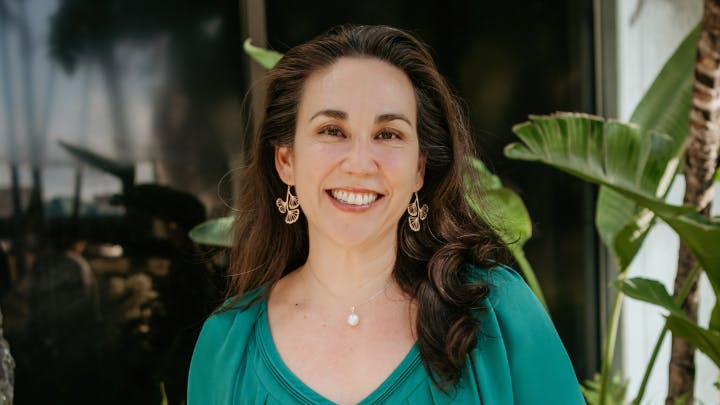
Photos courtesy Shawn Kana‘iaupuni
Across oceans and legal systems, the call to reimagine youth justice is growing louder—and in March and April 2025, I had the profound honor of organizing and joining a cross-sector delegation from Hawaiʻi on a huakaʻi to Aotearoa New Zealand to answer that call.
Our group included members of the Hawaiʻi State Judiciary and partners from the Opportunities for Youth Action Hawaiʻi collaborative that are committed to building brighter paths for youth in Hawaiʻi. Together, we traveled to learn from a nation that has made major inroads in reforming its youth justice system—reshaping it through the power of culture, community, and courageous Indigenous leadership.
What we witnessed wasn’t a patchwork of promising programs—it was a national movement. One grounded in legislation, guided by Māori and Pasifika voices, and driven by an unshakable belief in the potential of every young person. As a quote by former Principal Youth Court Judge John Walker reminds us: “Transformation requires us to change our expectations—not just expect youth to change.”
That truth stayed with me throughout the journey—and it continues to guide my hope for what’s possible here at home.
From Courtrooms to Marae: A Different Kind of Justice
At the core of New Zealand’s approach is the Oranga Tamariki Act 1989, which prioritizes family group conferencing over court proceedings and gives whānau (family) and community a central role in decision-making. In practice, this means that youth justice begins with healing and restoration—not incarceration or detention.
Conventional juvenile systems in the U.S. often default to formal charges, court proceedings, and institutional placement—even for minor offenses. In contrast, New Zealand requires that all reasonable alternatives be considered before prosecution, with over 80% of youth cases resolved without court appearances.
For those who do enter the Youth Court system, transformation continues. The delegation observed hearings at Te Kōti Rangatahi, a Māori Youth Court held on marae (traditional gathering grounds). Here, judges sit in front of carved ancestral posts, surrounded by kaumātua (elders) and whānau. The youth share their whakapapa (genealogy) and can engage in restorative cultural practices like kapa haka or carving. The courtroom becomes a place of reconnection. Te reo Maori, the Maori language, is used and respected by all involved. We from Hawaiʻi introduced ourselves in ʻōlelo Hawaiʻi, which was met with great appreciation.
Presiding over these spaces was Judge Ophir Cassidy, whose warmth and presence gave powerful form to the idea that justice can be relational, not transactional. Wearing her moko kauae (traditional chin tattoo), she described her work as a “return to who we are.” Holding court at a marae is special, and in her words, “I love serving in these spaces because it allows our young people to see that this system can hold them with care. Youth are not isolated from their culture or identity—they are immersed in it.”
Pasifika Courts and Mana Wahine Leadership
The delegation was equally moved by Judge Ida Malosi, Aotearoa’s first Pasifika woman judge and founder of the Māngere Pasifika Youth Court. In this court, justice reflects the unique identities of Samoan, Tongan, and Cook Islands youth. Church spaces replace formal courtrooms. Elders—known as matai or community leaders—are present not as spectators but as active participants in healing. Judge Malosi described her work as “bringing the village into the courtroom.”
This court model doesn’t merely accommodate cultural identity—it centers it as a pathway to healing. Where conventional courts emphasize guilt and penalty, Pacific courts prioritize accountability through restoration, community affirmation, and cultural pride.
Both Judge Cassidy and Judge Malosi, who took over as Principal Youth Court Judge as the first Pacific woman in this role when Judge John Walker retired, exemplify mana wahine leadership, reshaping institutions through Indigenous values. Their approach doesn’t reduce justice to systems compliance; it seeks holistic healing and growth of individuals and communities.
Community-Led Models: Justice Without Judges
The delegation also visited community-based programs like Mana Inc. in Papakura and Ngā Maata Waka in Christchurch. These initiatives extend justice beyond courtrooms entirely.
Te Pae Oranga, a police-referral diversion program run by Ngā Maata Waka, replaces prosecution with community-led restorative panels. Here, a young person sits with their whānau and the affected party. Together, they talk story, acknowledge harm, and create a plan for restitution—often involving skill-building, service, and mentoring. The process is confidential, non-punitive, and highly successful. Research shows significantly lower reoffending rates than court-involved youth.
Mana Inc. began without government funding, built on the leadership of Māori educators and parents. It offers entrepreneurship training, cultural reconnection, and peer mentoring—rooted in the belief that youth don’t need fixing; they need space to rise. One mother told the delegation, “They helped my son find purpose, not punishment.”
In both programs, justice is not a destination, it’s a relationship built on trust and accountability. These models challenge U.S. systems where court-ordered compliance and institutionalization are often mistaken for rehabilitation.
Comparing Systems: A Snapshot

Charting a New Course: What Hawaiʻi Can Do Now
The lessons from Aotearoa are clear—and they arrive at a time when Hawaiʻi is searching for better answers. If we are serious about transforming our youth justice system, we must act on what we’ve seen and what we know to be true: our young people are not broken—they are burdened. And our job is not to control them, but to care for them in ways that interrupt harm, restore dignity, and reconnect them to their highest potential.
The path forward begins with a set of bold but necessary shifts:
- Prioritize Diversion and Early Intervention
Justice shouldn’t start at the courtroom door. In fact, formal court involvement can deepen the very cycles it seeks to break. We must empower schools, police, and social service systems to intervene earlier—with dignity, not discipline—so youth never have to enter the justice system to begin with. - Always Address Root Causes, Not Just the Offending Act
No young person offends in a vacuum. Trauma, addiction, neurodiversity, and family hardship often sit beneath the surface. Justice responses that ignore these root causes fail to address what’s really happening. We must meet youth where they are—with treatment, support, and compassion. - Build Culturally Grounded Services and Courts
Disconnection from culture leads to disconnection from self. A justice system that erases identity cannot restore dignity. In contrast, we saw how Aotearoa’s marae-based courts and cultural practices offer a mirror of belonging. Hawaiʻi must expand our own Indigenous-led, culturally anchored spaces for healing. - Design Justice Processes for Neurodiverse and Trauma-Impacted Youth
Most youth in the system carry invisible burdens—learning differences, communication challenges, and past trauma. Courtrooms must be accessible, less intimidating, and responsive to these realities. That means using clear language, supportive environments, and people-centered design. - Extend Youth-Appropriate Practices into Young Adulthood (18–25 years)
Just because someone turns 18 doesn’t mean they’re ready for adult systems. Brain science and lived experience tell us otherwise. We must carry youth-appropriate approaches into young adulthood, with wraparound supports that acknowledge ongoing development and vulnerability. - Redefine What Success Looks Like
We must stop measuring success by how many youth are confined or how quickly cases close. True success means fewer young people reoffending, stronger family relationships, reengagement in school or work, and deeper connection to community and culture. - Strengthen Collaboration Across Systems
No single agency can do this alone. Real transformation requires coordinated care—health, education, law enforcement, courts, and community all working together. Our systems must come to the table not in silos, but as a team centered on the well-being of the young person and their ʻohana.
Here in Hawaiʻi, the Opportunity Youth Action Hawaiʻi (OYAH) at Kawailoa is already putting these principles into practice. Located on the grounds of the Hawaiʻi Youth Correctional Facility, OYAH is a collaborative initiative that brings together grassroots organizations to serve youth ages 14–24 who are disconnected from school, work, and traditional systems of care. Through culturally grounded education, mental health support, workforce training, and housing, OYAH reimagines what’s possible when community—not incarceration—is the response. This model offers a glimpse of what a just, healing-centered future for Hawaiʻi’s youth can truly look like (see wearekawailoa.org for more information).
In the words of Judge Walker, “It’s about creating a justice system that sees the potential in young people—not just their risk.”
This isn’t just a vision from across the sea—it’s a call we must answer here at home. Let’s build a justice system in Hawaiʻi that helps our youth walk tall.
This story appears in the May & June 2025 issue of Taking on Tomorrow.
Katie Bennett takes a life-changing trek through the the canyons of Utah that taught her new lessons about leadership.
